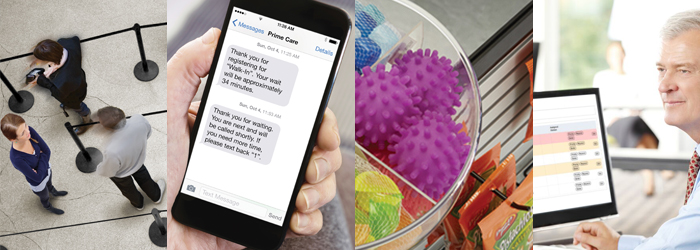
Por qué a algunas personas les "encanta" esperar en las filas
There is a famous line at Tokyo Disneyland that couples flock to wait in. The store outside of Frontierland sells inexpensive leather bracelets that can be embossed or painted with a person’s name. Park guests get in line for this less-than-$10 item and happily wait their turn (for a long time). Disney’s former VP of research thought that if an item were in such high demand, it would be better to make the bracelets available in more locations throughout Disneyland, in order to cut down the wait time. He was wrong. The waiting line was part of what made the item so valuable. Why? The answer may lie in the theory of self-signaling, which was highlighted in a recent Fast Company article “The Wisdom of the Cronut: Why Long Lines Are Worth the Wait.”

Self-signaling is about making decisions that communicate the kind of person we are. In other words, we wait in line for a cronut or a leather bracelet or the latest iPhone because of what the act of waiting for such a product sends a message to ourselves about the kind of person we are. People standing in line for the bracelets were doing so accompanied by their significant other, and the couples’ willingness to endure the long wait was evidence of their commitment to each other. Japanese tradition holds that exchanging leather bracelets with your sweetheart is a sign of bonding. As the author of the Fast Company article explains, the very act of waiting is what made the product so popular. By standing in that lengthy queue and enduring the wait, couples were making it clear to themselves, and to everyone around them, just how committed they are to the one they love. The wait for the most popular pastry of the moment, the Cronut, also sends a message. The people who wait in line for this trendy sweet are showing they are “in on the trend.” So, it could be said that the way we dress or the car we drive or the bag we carry or the jewelry we wear – the list goes on and on – are all self-signaling. We observe our own behavior to figure ourselves out, what we like, what we prefer. Our actions in particular provide many opportunities for self-signaling. For example, the person in front of you in line at the grocery store is a few dollars short so you pay the rest of their bill. That simple act doesn’t change who you are at the core, but it would provide you with evidence that you are a generous and kind person. That’s self-signaling. Self-signaling is certainly food for thought no matter what sort of enterprise you operate. If one cheap leather bracelet can encourage couples to stand in a long line to prove their love, perhaps a product or service your business sells can provide an opportunity for self-signaling so that people will be proud of themselves for standing in line. What do you think?
SUSCRIBIRSE
Suscríbase para mantenerse al día con los nuevos productos, información y noticias sobre los recursos.
ENTRADAS DE BLOG RECIENTES
Theft at the Register: How Strategic Queue Design Protects Profits
Leer el artículo completoRapid Deployment Crowd Control: JetTrac Portable Barriers For The Biggest Spaces
Leer el artículo completo4 Psychological Reasons Your Customers Hate Waiting In Line
Leer el artículo completoFrom Bleachers To Bookstores: 4 Campus Crowd Control Solutions
Leer el artículo completo








